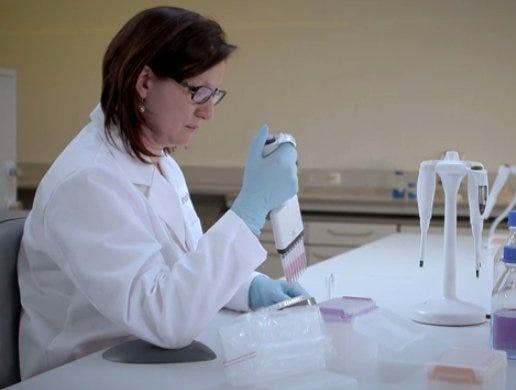Pipetting is one of the most common functions performed in labs. It is both a measuring technique and the conveyance used for transporting small volumes of fluid. Operations can become rote, but it’s critical to follow best-practices—with such small sample volumes, even trivial mistakes influence results.
How Many Standard Deviations From the Mean? Preventing Statistical Anomalies in Data Sets
Whether you are collecting data for a Pre-Market Authorization submission to the FDA or acquiring publication-quality data to satisfy the most shrewd peer reviewer, statistical outliers can destroy the confidence value of a data set. Many sources of variables exist when handling microliter volumes of liquid for experimental analysis.
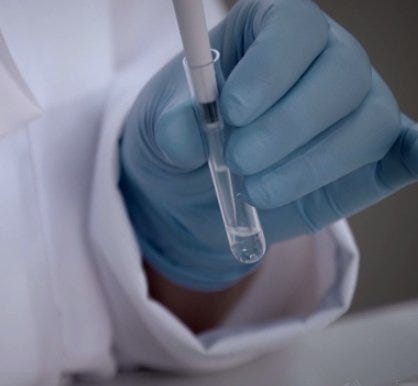
Single channel pipette.
First, intra-operator variability is the degree of variance that exists across multiple data sets performed by the same individual. Inter-operator variability is the degree of variance that exists between multiple operators performing an identical task. Both of these sources of variability can significantly impact confidence in the data.
Types of Variability in Pipetting
Intra-operator variance in manual liquid handling is typically introduced through differences in pipettes (instrumentation) or minute fluctuations in technique. For example, when pipetting into a microplate, an operator may not hold the pipette completely vertical, causing differences in pipette-tip capillary pressure. Therefore, you may see small fluctuations in the amount of dispensed liquid.
Similarly, with multiple pipetting into the same microplate, the operator may not consistently touch the tip of the pipette against the well wall. While these sources typically result in nano or picoliter differences in the aliquot volume, they can have profound effects on an experimental readout.
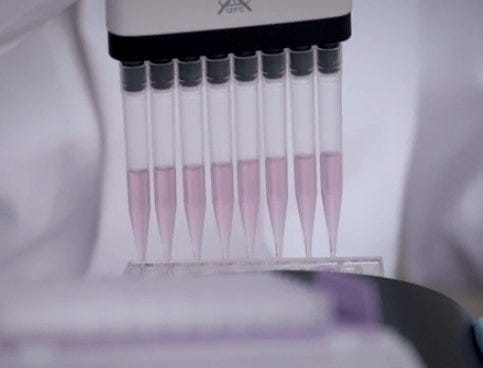
Multi-channel pipette.
Inter-operator variance in manual liquid handling is typically introduced through differences in operator technique. One example is the pressure applied to a pipette when dispensing liquid. The final phase of a single pipetting step involves pushing air through the tip to “blowout” any remaining liquid. While some operators may apply an adequate amount of pressure, others may apply too much pressure or expel the liquid too rapidly. Either of these differences can result in dramatically different readouts when data are acquired. These deviations translate into reduced confidence values when statistical analysis is applied, perhaps even falling well below the 99.7% benchmark.
Methods to Achieving a 99.7% Confidence Interval in Liquid Handling
Let’s return to the discussion about instrument variation. An operator’s technique is only as precise as the instrument he/she is using. For this reason, an individual pipette should always be used for a given experiment or when replicating experiments. Thus, while the accuracy of the pipette may be lacking, the degree of variability will remain constant across replicates and data sets.
In addition, pipettes should always be properly maintained. This includes regular cleaning and service by a certified technician. Accuracy and precision should also be calculated between scheduled services by measuring the weight of a known aliquot of liquid. These steps can dramatically improve the results obtained in liquid handling procedures.
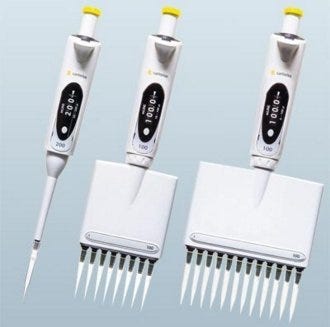
Manual/mechanical pipettes by Sartorius.
While instrument error is common, operator (human) error is arguably a much larger and pervasive problem when dealing with liquid handling. To combat these sources of error, several solutions exist for a principal investigator. First, train and retrain your personnel on a regular basis. Instructions for proper pipetting will go a long way in reducing mistakes.
Assess operator techniques at regular intervals and suggest corrective actions when needed. Running “dummy plates” for these assessments may consume costly reagents, but it’s better than having to justify outlying data points to a reviewer.
Go Electronic!
Electronic pipettes are perhaps the most useful tool in eradicating errors in pipetting procedures. Their accuracy and reproducibility far exceed that of manual pipettes, including multichannel pipettes. Both intra- and inter-operator variability is reduced to a manageable level. As long as your personnel are trained to accurately program these pipettes, the amount of liquid dispensed will surely be more precise than that of manual instruments.
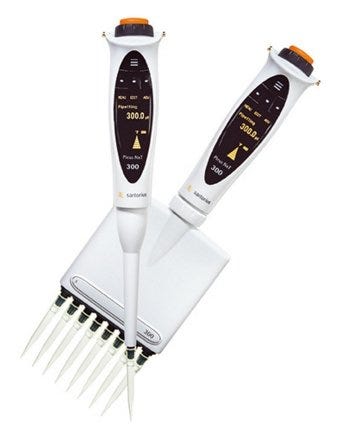
Electronic pipettes by Sartorius.
Operators can simply turn a knob or press a button to be assured that aliquot volumes will be within accepted fluctuation to the desired quantity. In addition, electronic instruments are superior to manual pipettes in terms of efficiency, which reduces operator strain and ensures that liquids are dispensed in a timely manner.
More expensive, electronic pipettes are arguably the single most important and effective solution in combating poor confidence intervals. In the hands of properly trained technicians, the benchmark of a 99.7% confidence interval no longer lays 2 standard deviations outside the mean.
Learn about manual and electronic pipettes from Sartorius at Laboratory-Equipment.com.



